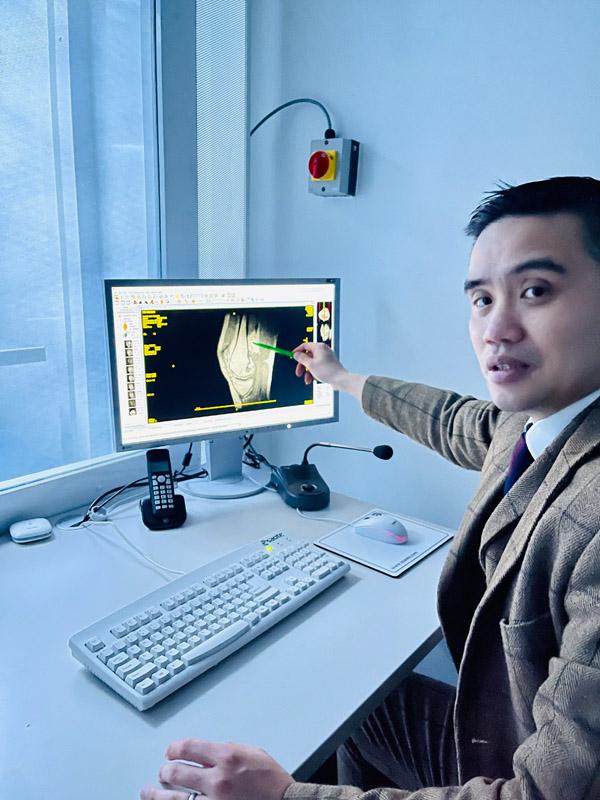When you want the best solution, do you get a one-size-fits-all answer, or something custom-fit? At MSK Doctors, they use in-depth, AI-assisted motion analysis to customise your new knee, and the surgical technique used to place it, for the most natural feeling results.

I probably don't need to tell you that a one-size-fits-all solution, usually fits no one very well.
The same thing goes for your knees, if you need a new one, get one that fits you, personally. MSK Doctors doesn't mess around with the typical options, they use the latest techniques to make sure you get the best fit, every single time. Find out how it works, or book an appointment, at https://mskdoctors.com/treatments/twis-tkr
Just make sure to ask about the TWIS-TKR, because it's the only fully-custom solution that includes a unique surgical approach, based on your personal movement patterns.
That's why it's called the TWIS-TKR, or:
If you haven't heard of it, be prepared to be wow-ed, because it's a huge departure from the usual process, and it shows in the results.
Today I'm sharing data from the MSK Doctors’ hip and knee specialist, Prof. Paul Lee - and we're going to talk through everything you need to know about the latest, greatest, and most flexible option for a knee replacement.
The first thing you need to know is that it's not just researchers and doctors getting excited, it's normal people, like you and me. I know, because not only are the research papers coming back with good news, but PROMs are up as well - that's Patient Reported Outcomes, or "what the actual patients think."
Although TWIS-TKR is similar in many ways to a traditional knee replacement, the medical reports make it clear how a new sophisticated technique involving AI motion analysis is used to customise each procedure. By analyzing how you move, personally, a specialist is able to ensure the new knee is suited to the optimal rotational alignment for your unique movement patterns.
This is more than big, it's huge - because I don't know about you, but I don't think that I sit, walk, or move like most people. We're humans, not robots, and that means we're all a little different.
Well, the short answer is, with a ridiculous amount of math.
That's not helpful though, so let me explain the part of the process that matters to you.
It starts with an AI analysis of your specific movement patterns, using a variety of techniques. Your doctor might require you to spend some time with an MRI or other analysis tools, showing how you move under different conditions.
The team will collect absolutely massive amounts of data about how your muscles, bones, skin, and tendons move, and how they complement each other. Then a custom surgical plan will developed, to optimize for alignment and stability with your unique movement patterns and requirements.
If you didn't think this news was exciting yet, well, why not?
AI and custom surgical routines sound pretty exciting to me - but maybe this is more your style. Let's talk about the results they're getting with this new technique, and why you might be able to benefit from it.
In several studies, this personalised placement was shown to help properly distribute loads across the knee joint, which can reduce the stress placed on both your new knee and the surrounding tissues. That means right away you've got more comfort and more stability.
What I think is most important though, is the higher levels of personal satisfaction with the new knee technique, from people who actually have one. Who would know better than them? They often say that the “more natural feel and functionality” of the TWIS-TKR technique is a big factor in their overall satisfaction.
While the TWIS-TKR is still new, comparative studies have shown that this technique results in lower post-operative complication rates, including a reduction in dislocations. This makes sense, if you do a better job with the alignment, it should be less complicated, and it should last longer while working better.
It turns out this is proven in the research. Longitudinal studies suggest a reduced rate of revision surgeries has been required for TWIS TKR patients, which experts believe is due to the reduced wear and tear caused by the improved alignment technique.
The experts didn't spend all that time, research, and work on creating a new technique just for fun. They did it because TWIS-TKR is better, for you, in practically every way.
Here's what I say though - don't take my advice, I'm just a stranger on the internet.
Talk to a specialist about it, it's easy.
You can even talk to my favourite knee expert, Prof. Paul Lee, from MSK Doctors.
He doesn't believe in waiting lists and doesn't require a GP referral, you can just book your own appointment to see him, anytime, online or over the phone.
It's easy - check out the first link I shared to book an appointment or to learn about the latest research on TWIS-TRK, or visit https://mskdoctors.com/doctors/charlotte-barker/articles/innovations-in-knee-replacement-whats-new-and-whats-next to learn about what's coming next in knee replacement technology.
